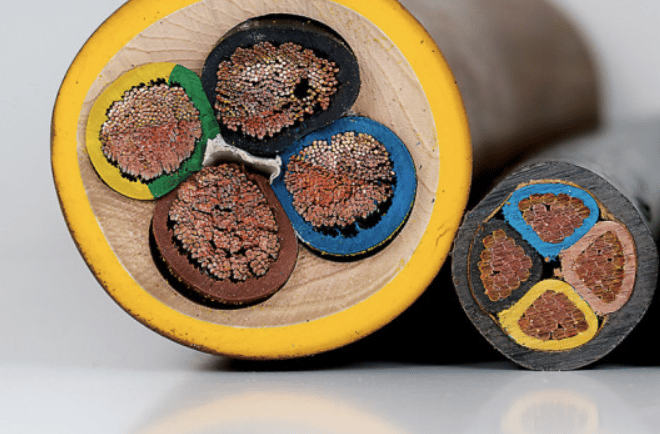Can the cross-section within a circuit be reduced?
Cross-section reduction within a circuit


Standards for reducing the cross-section of electrical cables There are generally no exceptions for reducing the cross-section of cables in permanently installed electrical systems. Such a reduction is only possible under specific conditions for electrical equipment - for example, limited to certain lengths. These exceptions are defined in the relevant standards for the equipment. One example of this is electric shavers in accordance with DIN EN 60335-1 and 2-8 (VDE 0700-1 and -8), for which a limit of 2 meters is specified for some cable cross-sections (not all). The type of consumer prevents overloading of the connecting cable with the reduced cross-section. The reduction in length is not relevant for the current carrying capacity, but for mechanical reasons and possibly for protection in the event of a short circuit.
The switch-off conditions (short-circuit protection, fault protection) in accordance with DIN VDE 0100-410 (VDE 0100-410) are known to end at the permanently installed socket outlet or the permanently connected load. A short, reduced cable section on such appliances connected via plugs probably has no significant influence. This applies in particular if fault protection is already ensured by additional protection with residual current devices (RCDs) with a rated residual current of no more than 30 mA, or if the equipment is of protection class II.
Reducing cross-sections in practice
Practical applications of cross-section reduction In practice, it is possible both physically and in accordance with the standards to reduce cable cross-sections, provided that the upstream overload protection device is selected in accordance with the reduced cross-section. When assigning a 16 A circuit breaker for a reduced cross-section, as in your case, this is permissible if installation type B1 or B2 is assumed. This regulation refers to two loaded cores in cables or lines, under the condition of an ambient temperature of 30 °C and without accumulation. Further details can be found in Table 3, column 6 or 8 of DIN VDE 0298-4 (VDE 0298-4)
The relevant normative specifications are set out in DIN VDE 0100-430 (VDE 0100-430). In particular, section 433 of DIN VDE 0100-430 (VDE 0100-430):2010-10 specifies that additional overload protection devices are not required for conductors that lie behind the change after a change in cross-section (e.g. due to a different design of the lines/cables or a change in the type of installation), provided that these conductors are effectively protected by an overload protection device on the supply side. Short-circuit protection must also be guaranteed.
In your case, this requirement is met by the 16 A miniature circuit breaker (as mentioned above), as protection is ensured by a coordinated protective device (see section 435 of DIN VDE 0100-430 (VDE 0100-430):2010-10). This ensures protection against overload and short-circuit regardless of the cable length.
In addition, protection against electric shock, i.e. fault protection, must be taken into account. According to Table 41.1 of DIN VDE 0100-410 (VDE 0100-410), the faulty circuit must be switched off within 0.4 seconds in the TN system. This applies to all final circuits up to 32 A.
For the automatic disconnection of the power supply, a short-circuit current of 80 A must flow with a circuit breaker with characteristic B and a short-circuit current of 160 A with characteristic C. This is achieved if the maximum permissible loop impedance of 2.875 Ω or 1.437 Ω is not exceeded, which should be verified by calculation or, better still, by measurement. If a residual current device (RCD) with a rated residual current of max. 30 mA is connected upstream, this consideration can be omitted.
